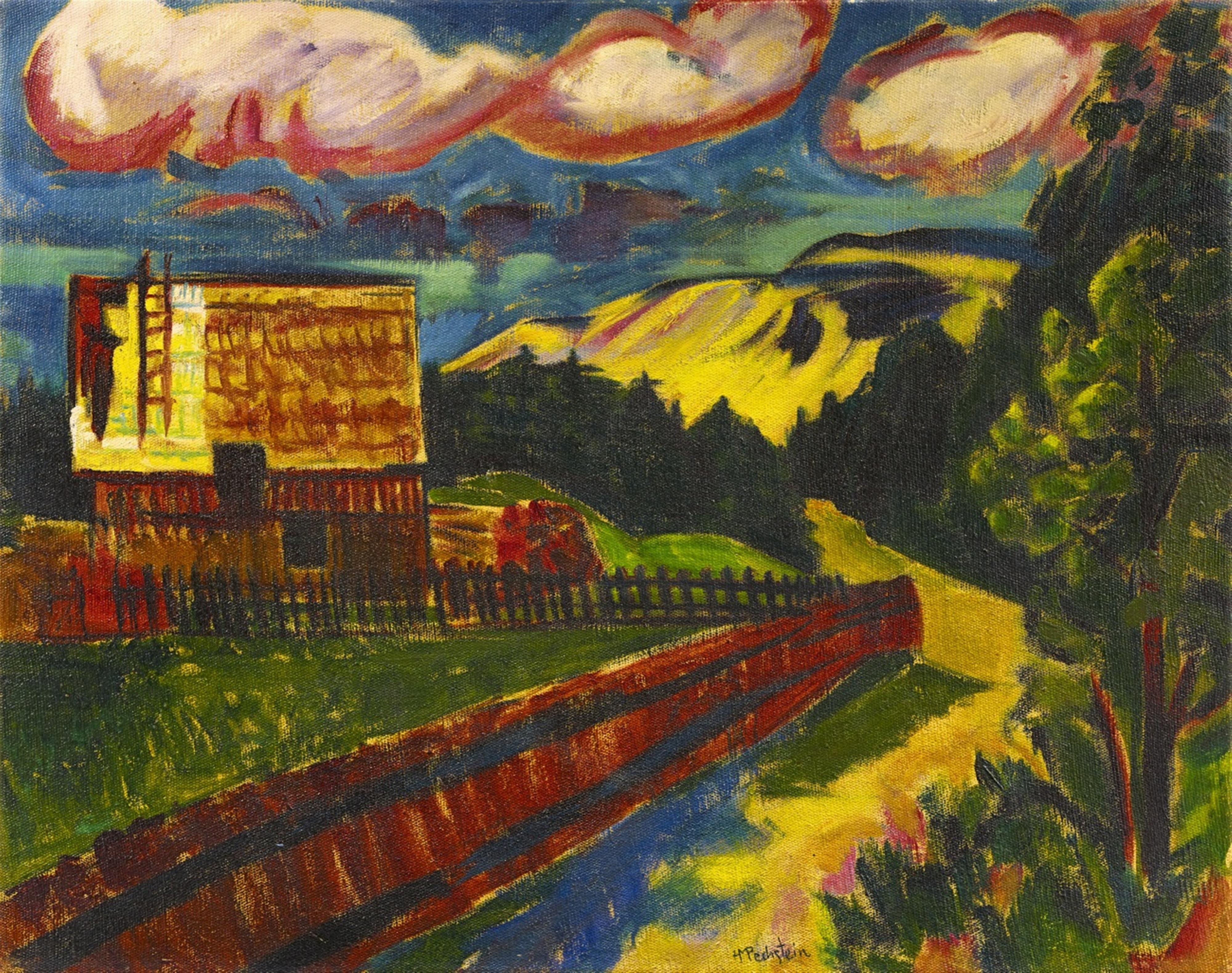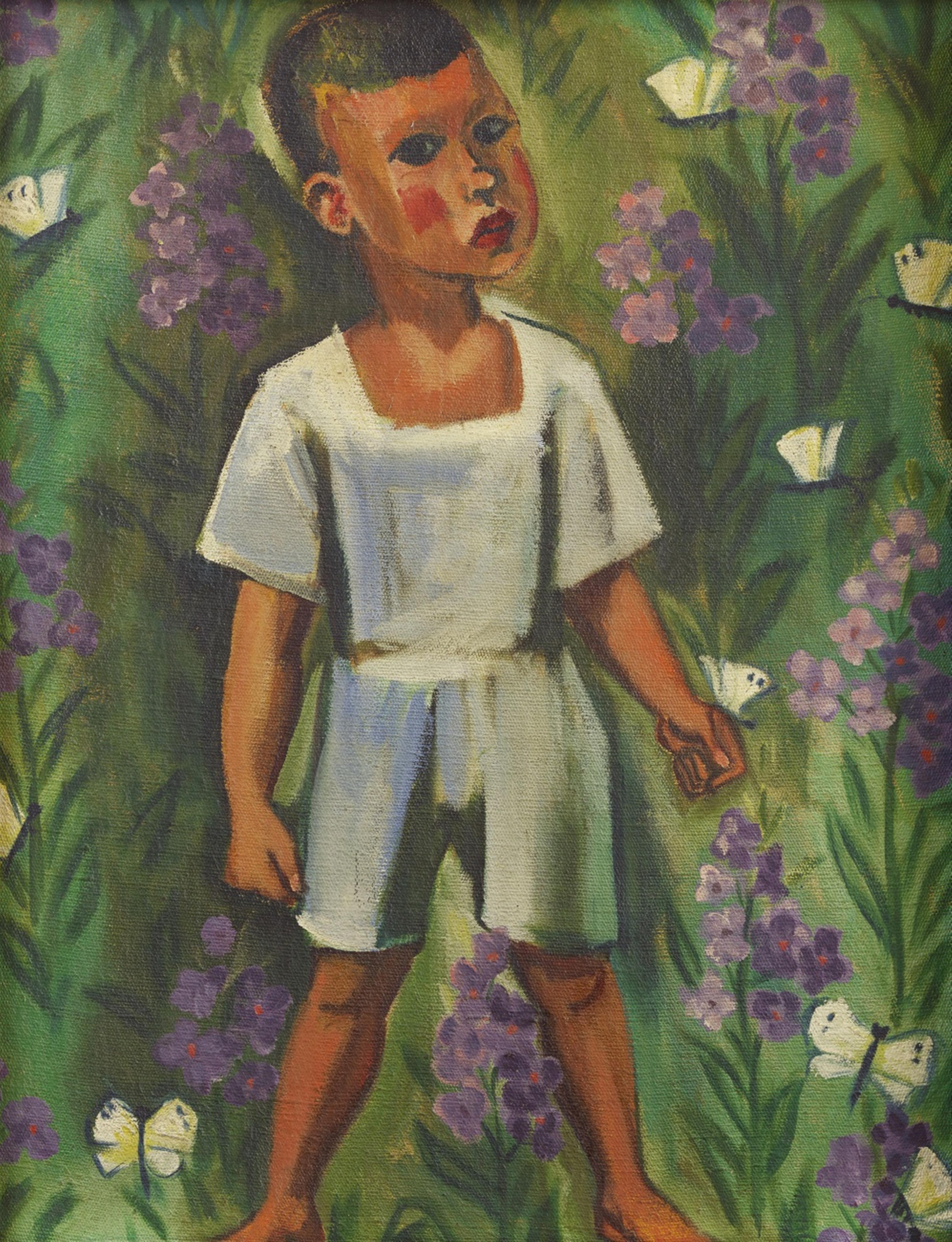Hermann Max Pechstein
Dorfende und Wanderdüne in Nidden. Verso: Frank im Lupinenfeld mit Schmetterlingen
Circa 1920
Oil on canvas, painted on both sides. 79 x 100 cm resp. 100 x 79 cm. Signed 'HMPechstein' (joined) in dark green on front side centre lower right.
“A joy, this Nida: framed by the Baltic on its evening side, on its morning side is the lagoon and the charming pines, elongated dunes” (Hermann Max Pechstein to Friedrich Plietzsch, 23 June 1911, cited in: exh. cat. Max Pechstein. Ein Expressionist aus Leidenschaft. Retrospektive, Kunsthalle Kiel 2010, p. 101).
Beginning in 1909 Max Pechstein travelled to Nida, a town on the Curonian Spit, a total of six times. At the foot of the shifting dunes, he spent productive summer months between the Baltic Sea and the lagoon. The year 1920 would be the painter's last chance for some time to visit what he experienced as a magical location: according to the Treaty of Versailles, it was to be placed under allied administration that same year.
The present canvas testifies to Pechstein's unconditional will to paint not least through the fact that it contains works on both sides - with the iconic lagoon landscape on one side and his very personal portrait of his young son Frank on the other. From a formal point of view, the two-dimensional compositions featuring broad brushstrokes and bold colours strikingly convey Pechstein's increasingly simplified Expressionist painting of the early 1920s. These works bear witness to an elemental and commanding experience of nature, and they enjoyed a thoroughly positive response from contemporary critics. For example, in 1920, Paul Fechter wrote: “The powerful effect radiating from Pechstein's new works is surely founded on the fact that, today, the energy of the experience and the act of composing are of corresponding intensity and balance one another. There are earlier works by him in which sometimes one and sometimes the other dominates. Today he has found an assured equilibrium. With all its purity, the colour is visible, but all the richer in itself; the visual form, which can scarcely be grasped conceptually or abstractly, only becomes perceptible to the instinct through the chromatic composition and has become more solid, more necessary.” (Paul Fechter, Zu neuen Arbeiten Max Pechsteins, in: Die Kunst, volume XXXV, 1920, p. 224).
Catalogue Raisonné
Soika 1920/4; Verso Soika 1920/33
Provenance
Private collection, Baden-Württemberg (early 1950s until 1997); 746. Math. Lempertz'sche Kunstversteigerung Moderne Kunst, Cologne, 7 June 1997, lot 1471; since then Private collection, Baden-Württemberg




